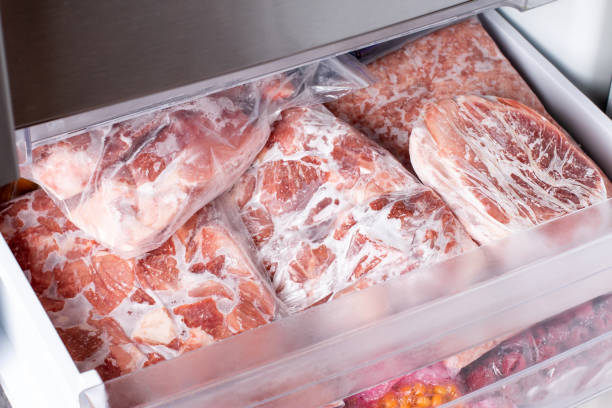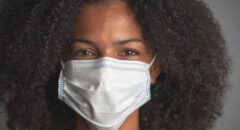
Had COVID? You might want to clean your freezer out. A new study suggests that coronavirus can survive on frozen meat and fish for up to 30 days.
The research -- prompted by COVID outbreaks in Asia in which packaged meat was suspected as the virus' source -- was conducted on frozen chicken, beef, pork and salmon. The findings were published June 11 in Applied and Environmental Microbiology, a journal of the American Society for Microbiology.
"Although you might not store meat in the fridge for 30 days, you might store it in the freezer for that long," says first author Emily Bailey, assistant professor of public health at Campbell University in Buies Creek, N.C.
Her team conducted its research without the use of the actual coronavirus that causes COVID-19. Instead, researchers relied on surrogate viruses with similar protein spikes.
RELATED: Rethink What You Thought You Knew About COVID-19 Reinfection coronavirus
These similar viruses were placed on frozen meat and fish, which were then stored at both refrigerator temperatures (39.2 degrees Fahrenheit) and freezer temperatures (-4 F.)
"We even found that the viruses could be cultured after [being frozen for] that length of time," Bailey said in a journal news release.
Researchers said their findings are significant because SARS-CoV-2 can reproduce in the gut, not just in the respiratory tract where most people feel its effects.
Three virus strains were used as surrogates in the study, including two animal coronaviruses. All three have been used as stand-ins in previous studies of SARS-CoV-2.
The researchers found that the viruses didn't fare as well in refrigerated temperatures as in freezer temperatures. The numbers also differed by food item.
They said this study underlines the importance of rigorous sanitation in the harvest, transport, packaging and distribution of food products.
"Continued efforts are needed to prevent contamination of foods and food processing surfaces, worker hands, and food processing utensils such as knives," the authors wrote, adding that the disinfection of foods prior to packaging also needs to be addressed.
RELATED: As Cases Rise, Here’s How to Protect Yourself From COVID BA.5 coronavirus
How to properly sanitize your food
In the meantime, you can practice appropriate food hygiene at home to ensure that your raw meat and cooked products remain safe.
The CDC and U.S. Food Safety and Inspection Service (FSIS) offer simple guidelines:
- Wash hands and surfaces. Wash your hands often with warm, soapy water for at least 20 seconds. Scrub food surfaces, such as cutting boards, countertops, and sinks, before and after use.
- Separate foods. Keep raw and ready-to-eat foods separate to avoid cross-contamination and the spreading of germs.
- Thoroughly cook foods. Cook meat to the appropriate internal temperatures to kill harmful pathogens and make it safe to eat.
- Chill. Promptly refrigerate meat and safely thaw meats in cold water, the refrigerator, or the microwave. Learn more about refrigeration storage here.
Thinking about washing your meat? It is important to note that washing raw meat with plain water is ineffective at removing bacteria. In fact, it may cause more harm than good by spreading foodborne pathogens to other foods and across cooking surfaces.
Acidic solutions like white vinegar and lemon juice, on the other hand, may lower the number of bacteria on raw meat, however, this practice is influenced by cultural practices and purchasing habits.
These are the common acidic solutions used in meat preparation:
- White vinegar. This common cooking and cleaning ingredient is also one of the most common acids for washing meat. It contains acetic acid, which has been shown to reduce bacterial volume and growth on the surface of beef, chicken, and duck.
- Lemon or lime juice. These citrus juices are not only useful in daily cooking but have also been found to reduce bacteria on meat and retain the flavor of cooked meat.
- Food-grade sodium hydroxide (NaOH). This food additive prevents mold and bacterial growth and is used to remove the skins of fruits and veggies like tomatoes or potatoes. NaOH reduces bacterial growth on the surfaces of meat.
It should be noted that it is unclear whether these acidic solutions kill harmful foodborne viruses, so practicing appropriate food hygiene is the best way to ensure that raw meats are safe to cook or freeze.









